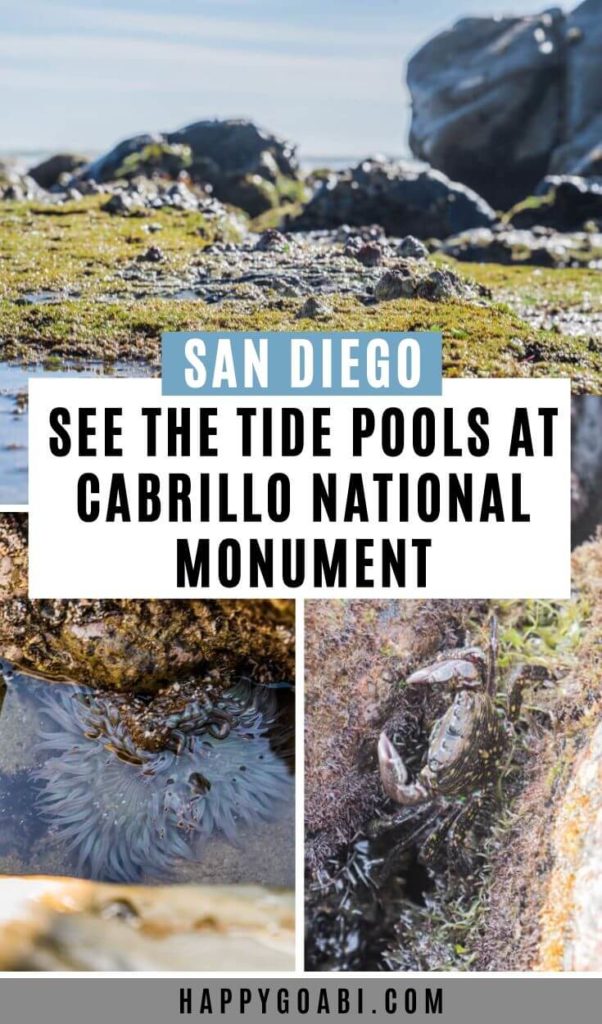While the city of San Diego is filled to the brim with amazing things to do, I find that the outdoor places to explore in San Diego are just as fun! One of these places you won’t want to miss visiting is the Cabrillo Tide Pools at Cabrillo National Monument.
If you are thinking of visiting the Cabrillo Tide Pools, this guide will help you learn all you need to know to have the best experience exploring this unique and exciting place.
What are the Cabrillo National Monument Tide Pools?
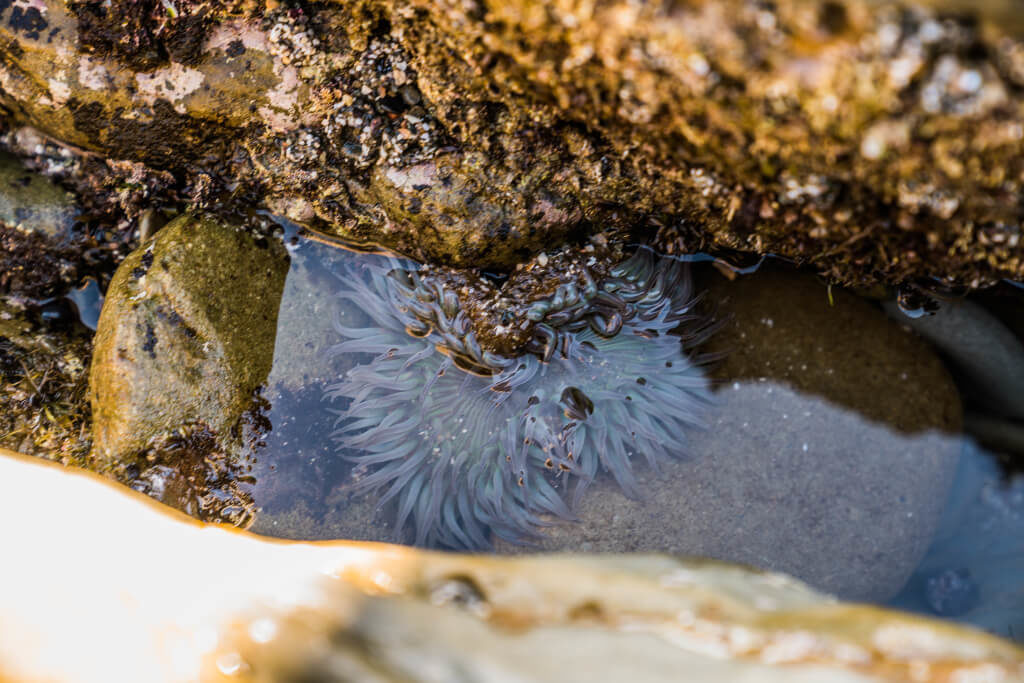
Tide pools are areas also known as intertidal zones. This means that they are between tide marks—above the water at low tide and underwater at high tide. Or, as many of us non-scientific folks would say, this is where the ocean meets the shore.
Tide pools like the ones at Cabrillo National Monument are fun to visit because of the amazing diversity of life that exists in these intertidal zones. Seawater gets trapped in depressions along the rocky coasts as the tide recedes, and this creates a variety of habitats that are perfect for many forms of sea life. The Cabrillo Tide Pools are fairly easy to reach, which makes it the perfect place to experience these creatures up close!
What Sea Creatures are at the Cabrillo Tide Pools?
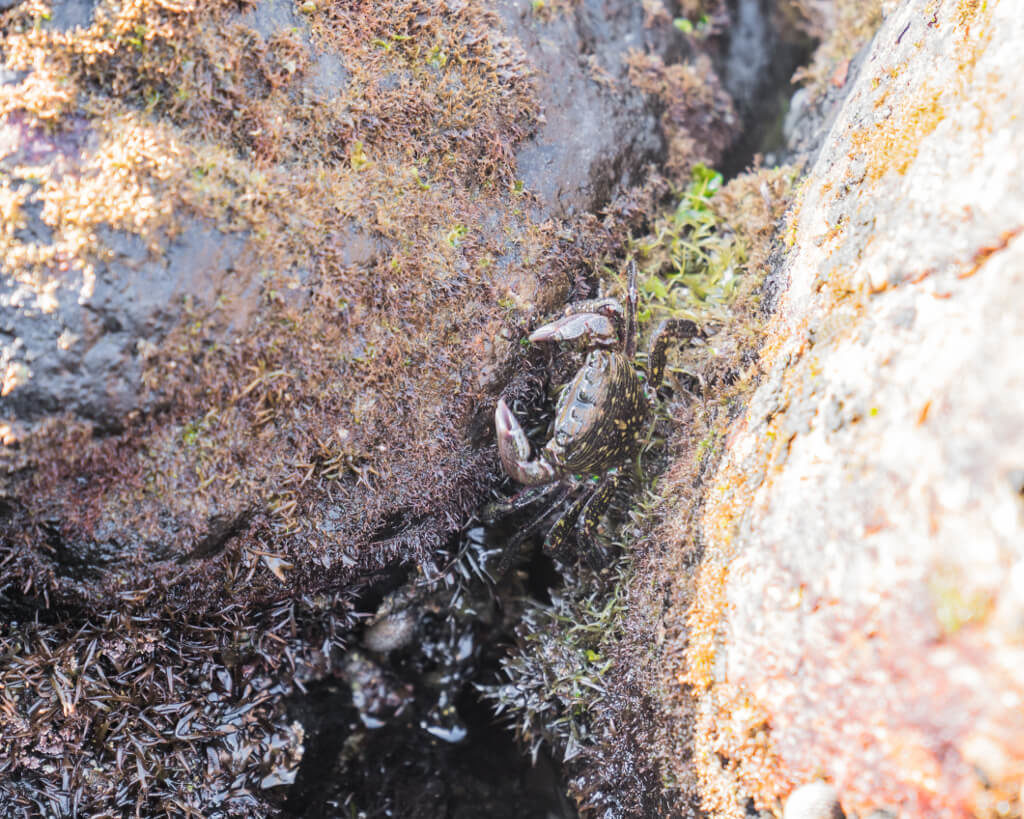
The sea life at the Cabrillo Tide Pools is diverse and beautiful. On a good day with a nice low tide, you can expect to see a lot of different species including some really exciting creatures!
You may see your standard tide pool staples such as mussels, barnacles, and hermit crabs as well as some plants like sea lettuce, wire weed, or seagrass. But you may also get to see the vibrant Hopkins Rose (a pink sea slug) or the fascinating Sea Hare (a large, soft-bodied slug that can produce ink like an octopus!)
And if you’re even luckier, you may even spot a real life octopus or a moray eel! And hopefully you’ll get to see the shore crabs that scuttle in and out of the rocks (but you’ll have to stand or sit really still to get a chance to see them).
This is just the beginning of the creatures and cool things you may see, as of course there are sea urchins, starfish, anemones, and plenty more amazing things to see at the Cabrillo tide pools Be sure to download this guide to the creatures of the tide pools before you go and bring it with you so you can identify all the cool creatures you see!
How to Visit the Cabrillo Tide Pools
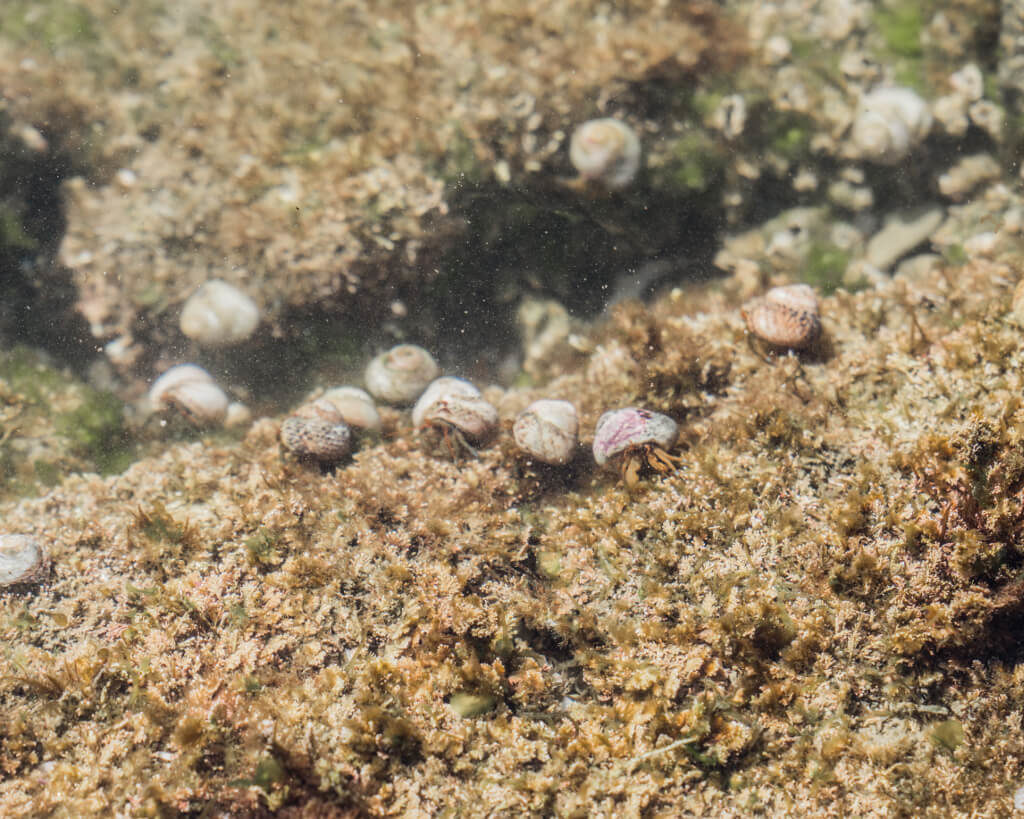
Getting to the Tide Pools
The Cabrillo National Monument Tide Pools are located in Cabrillo National Monument in California. This park is at the southern tip of the Point Loma Peninsula in San Diego and it is a beautiful place to spend the day hiking and exploring.
In order to visit the tide pools, you will need a vehicle because they are located at the lower area of the park. There is a road that leads down from near the park’s entrance, but you will not want to walk down it as there is only room for cars and you could easily be run over if you attempt to walk it instead of driving.
Once you drive down the hill, you will find a small parking lot where you can park and then it is just a short walk (and a bit of a scramble) until you are down at the tide pools. Be aware that parking is limited, so if you wish to explore the tide pools you will want to get there early enough to get a parking spot.
Entrance Fee
Because Cabrillo National Park is part of the U.S. National Park system, you will need to pay a fee to enter. There are several options to choose from, and here are a few of the most popular:
- 7 Day Entrance for Vehicle ($20) or Bicyclists ($10)
- America the Beautiful Annual Pass for all National Parks ($80)
- Cabrillo Pass for 12 months of entry ($35)
The Cabrillo pass is a good option if you live in the San Diego area and only want to have access to this one park for the next year, and the America the Beautiful pass is perfect for those who explore the national parks a lot or who are on a vacation that may include other California parks (like Sequoia National Park or Kings Canyon National Park).
Best Times to Visit
Anytime when the tide is low is a good time to visit! You can check out the tide charts before you go so you know what time to be at the lower part of the park. You can expect the tide pools to be fairly good to see two hours before and two hours after low tide.
The lower the tide, the better it is for seeing more of the tide pools…so if you have the chance to visit during a negative tide then that is the absolute best time to go.
In general, however, the best time of year to visit is in late fall to winter because low tides usually occur in the daylight hours during these months. This is good because the park is only open during the daylight! But if you visit during the summer, you may find that the low tide falls in the middle of the night. Which isn’t good, because the tide pools close at 4:30pm every day.
What to Bring to the Tide Pools
Bringing shoes with good gripping soles is an excellent idea. All the rocks and shells and such make it really uncomfortable to walk barefoot. The rocks of the tide pools are also super slippery with algae, so you will need to be careful so you don’t slip and fall. Shoes like these are a good option to help you stay safe and comfortable while exploring the tide pools.
Note that there is no cell phone access at the lower part of the park, so if someone drops you off there you will need to make sure you have a meeting time for them to pick you back up.
If you plan to visit in a group of ten or more, you will need to make a reservation for the tide pools and obtain a permit. This is just for large groups or school field trips, though. The general public is free to visit on their own at any time without making a reservation or getting a permit.
Cabrillo Tide Pools Tips and Rules
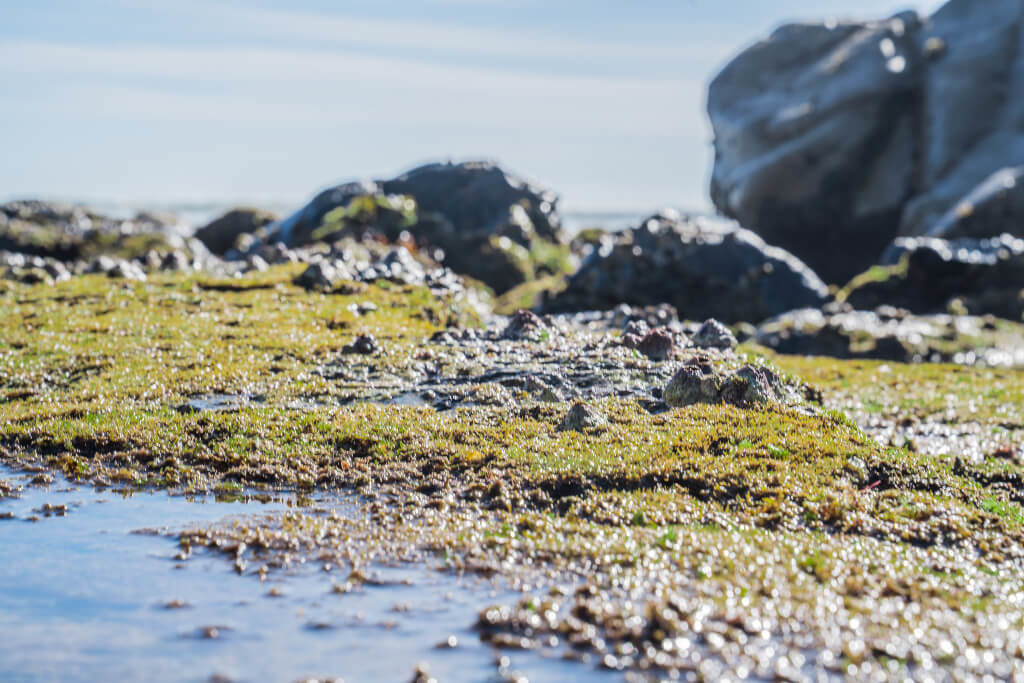
You Can:
- Touch the tide pool animals…if you touch them with respect. The Cabrillo tide pool rules suggest you touch the animals as gently as you would touch your own eyeball.
- Pick up organisms if they are easy to pick up and not attached to anything.
- Handle animals for a short time and then return them to their original position.
- Handle organisms only in the water if you found them in the water. Do not expose them to air.
You Must Not:
- Pick organisms up if you have to use force. This can permanently harm animals such as limpets, barnacles, starfish, urchins, and others.
- Pick up or touch animals that are swimming or moving away from people and are resisting being handled.
- Pick up animals that are hiding in crevices or under rocks.
- Handle animals like an octopus who are fragile or easily stressed.
- Pass organisms around from person to person.
- Bring containers or buckets.
- Scrape or probe anything.
- Take anything away from the tide pools or home with you. THIS IS STRICTLY PROHIBITED.
If you have questions about the rules or are concerned that someone may have placed an organism in a location it does not belong, be sure to talk with a park ranger. Do not attempt to relocate the animal yourself as you may do more damage than good. Check out the official rule guide to learn more about how you can help protect the tide pools during your visit!
Save for Later
